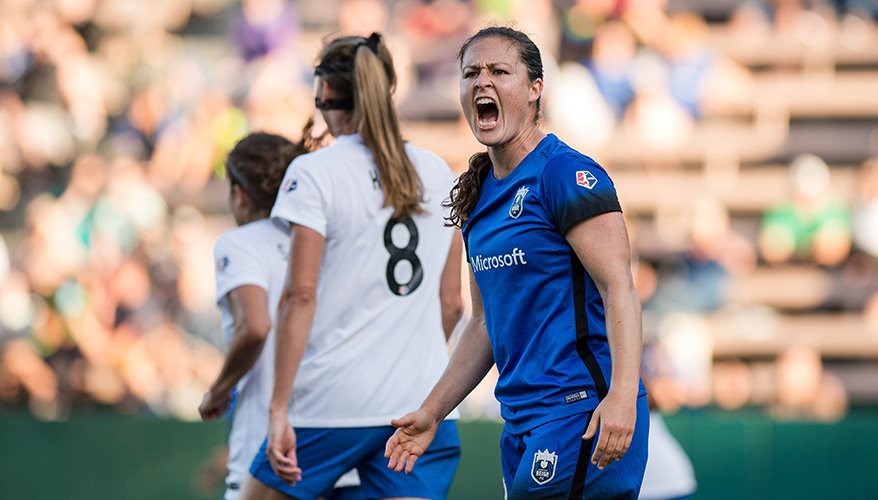MLS and the NWSL have a lot in common, but this often goes overlooked

You might not know it from the mainstream media coverage, but there’s actually more than one top-flight soccer league in America. Of course there’s MLS, but there’s also the National Women’s Soccer League. And although the NWSL is pushed aside in discussions of American soccer, it and MLS are more similar than you might think.
Whether warranted or not, Major League Soccer itself still carries negative connotations. Some MLS fans seem to spend just as much time defending the league as they do watching matches. They feel they have to argue against accusations that it’s a retirement league with slow play, despite a 34-year-old Landon Donovan being able to literally walk back out of retirement and make a significant impact for the L.A. Galaxy. And that the league doesn’t have a lower quality of play despite players who develop there rarely ever making it when they go abroad. And, mainly, how people shouldn’t continually write off an ever-improving league because of one bad game they watched six years ago just like they shouldn’t write off soccer entirely because one game once was a dull nil-nil — even if that one game was the most recent MLS Cup final.
But a lot of these same fierce advocates don’t give the NWSL the same treatment they expect of those they’re trying to convince of MLS’s virtues. In one breath they insist that MLS should be given a chance while also being quick to dismiss the NWSL on the “fact” that women’s soccer is and always will be bad.
That kind of thinking is as misguided as if, say, Bob Bradley’s simply being American had negatively impacted how seriously he was taken at Swansea. Oh, yeah—it’s like that, but because of breasts. Of course, the “defenses” are often more nuanced than that: it’s slower (because of science, of course), it’s more boring (because women’s play tends to be more mentally-focused, about strategy), and all of that adds up to it being generally lower quality.
It’s hard to believe that these conclusions come from much more than confirmation bias. There were some great games in the NWSL last year, but people of that mindset will only point to the Boston Breakers. And sure, the league isn’t putting out a perfect product, but that’s for a lot of reasons — the main of which is money, considering the league isn’t even financially viable without the support of U.S. Soccer. An increased cash flow could help improve the NWSL in so many ways, from allowing players to be able to focus full-time on the league rather than need second jobs in order to support themselves — the minimum salary for the NWSL is only $7,200—to providing better facilities to train or even play on. Last year, the Western New York Flash had to move their game versus the Seattle Reign to a triple-A baseball field, and the makeshift pitch was only a mere 58 yards wide. The situation was nothing short of disgraceful. (However, it should be noted that there is an MLS team that regularly plays on an unusually small pitch squeezed onto the outfield of a baseball field.)
And though it is an undeniable fact that an influx of money can help improve any team in any league, which would then help bring it more attention, the same people who laud MLS’s ever-expanding designated player rule that can attract players like Thierry Henry and David Villa turn around and say women’s players shouldn’t be paid more until the league gets more attention. There is only one answer to the classic chicken-or-egg question — it can’t be the chicken for men’s soccer and the egg for women’s.
Although the unfortunate current conclusion comes back around here: Even if the NWSL paid each player $3 million a year and Marta came over, people still would scoff simply because of that “W.” After all, the best U.S. women’s players — as well as some other countries’ best, like Canada’s Christine Sinclair — are already here, and are continuing to prove that golazo is a gender-neutral term. I wonder if those people know that both teams in the NWSL final this year had at least one shot on goal before the game went to penalties. Not to mention that the TV viewership over the past few Women’s World Cup cycles has consistently proven that there is an interest in the women’s game at a top level.
I say we meet somewhere in the middle and say that both leagues still have some — a lot of — growing to do in terms of quality. Blind defenders of any league are just as nonconstructive as blind disparagers, and there is plenty of room for a legitimate discussion of each league’s shortcomings — but it needs to start with the acknowledgement that the NWSL players being women isn’t one.

